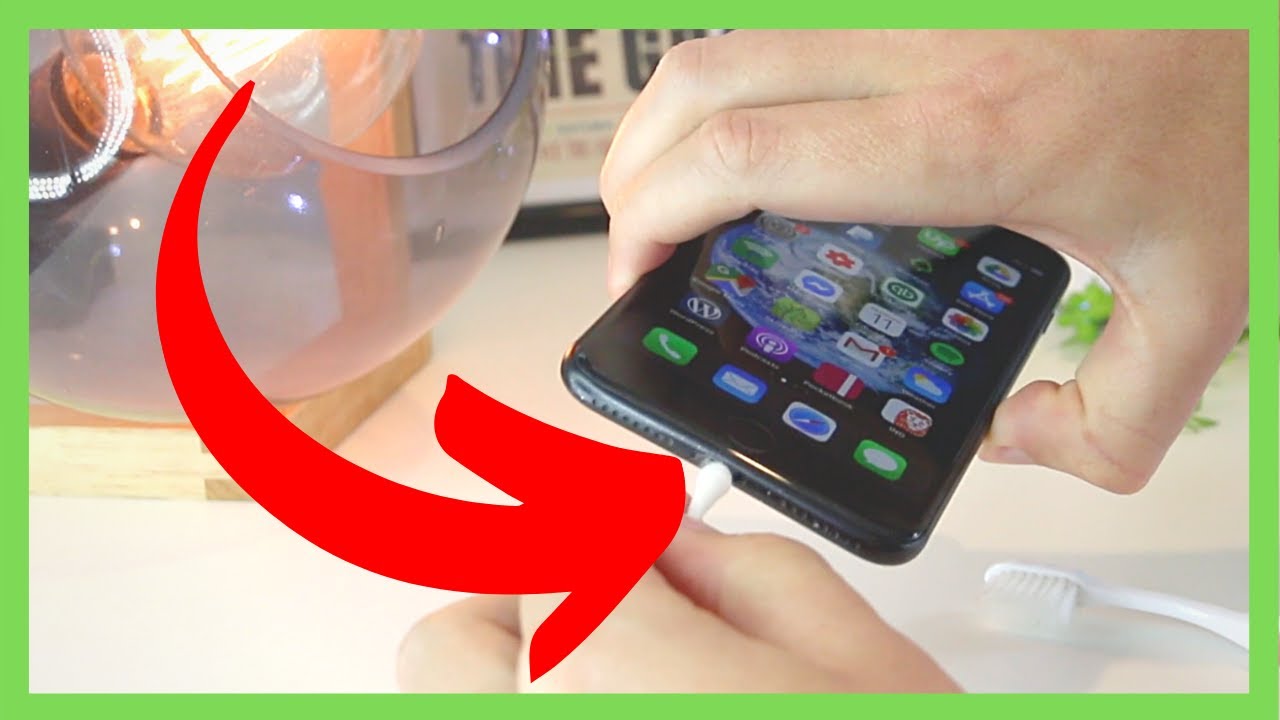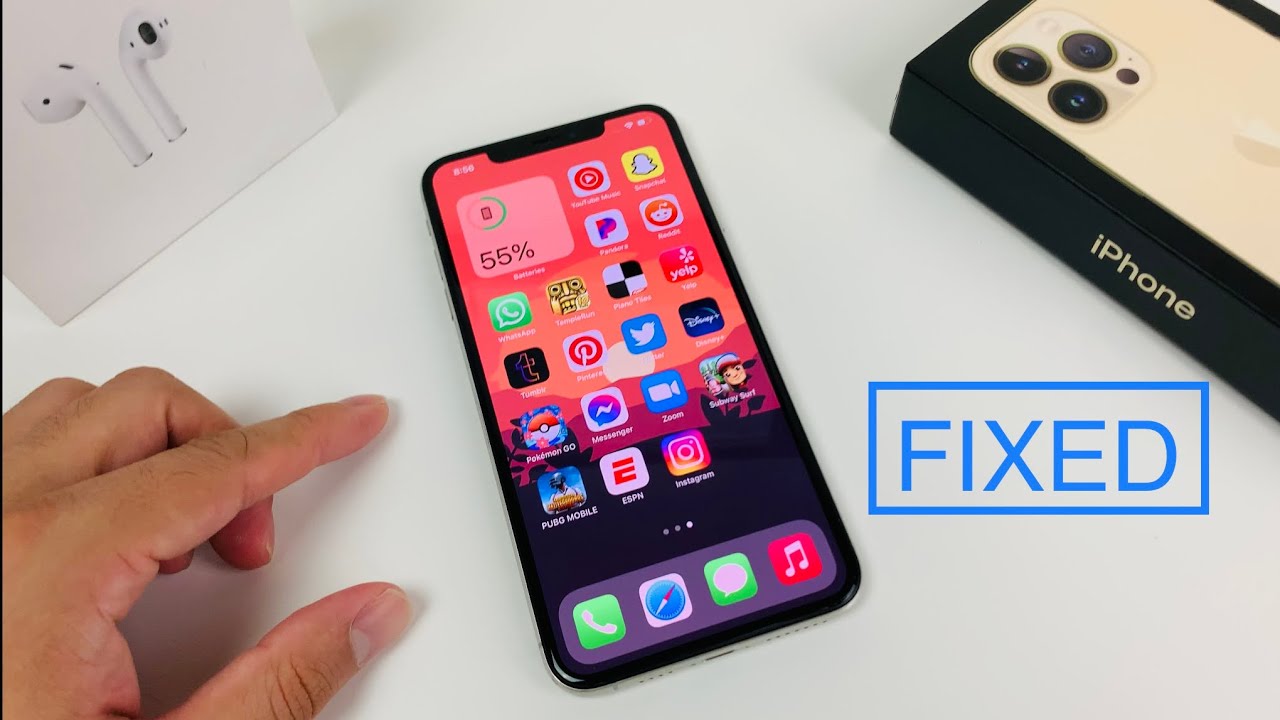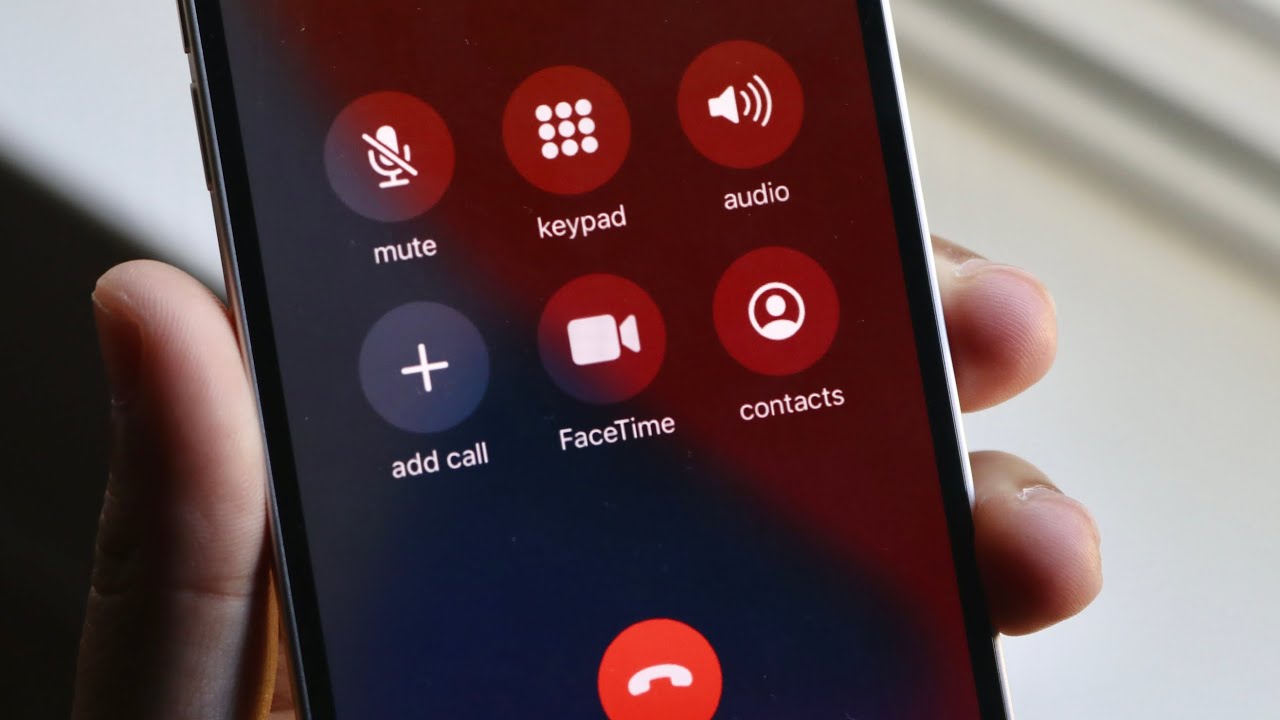The speaker on your iPhone is an essential component that ensures clear and audible sound during calls, notifications, and various other scenarios. However, encountering a non-working or broken iPhone speaker can be frustrating, hindering your ability to communicate effectively.
Whether you're experiencing a complete lack of sound or muffled audio, addressing this issue promptly is crucial. In this guide, we will explore effective solutions tofix non-working broken iPhone speaker, enabling you to restore optimal sound quality and enjoy uninterrupted conversations and audio playback.
By following these troubleshooting steps, you can overcome common obstacles and regain the functionality of your iPhone speaker, ensuring crystal-clear communication and an enhanced user experience.
Reasons Your iPhone's Speaker Isn't Working During Calls, Notifications, Or Other Situations
The iPhone's speaker plays a vital role in ensuring clear and audible communication during phone calls, as well as providing audio output for notifications, media playback, and various other scenarios. However, there are times when the speaker may stop working, causing frustration and inconvenience.

FIX No Sound In Calls or Mic Not Working On Any IOS Devices
If you're facing issues with your iPhone's speaker, here are some possible reasons and solutions to resolve the problem.
- Software Glitches -Sometimes, software glitches can affect the functionality of your iPhone's speaker. Glitches can occur due to various reasons, such as outdated software, conflicting apps, or temporary bugs. To fix this, try restarting your iPhone by pressing and holding the power button until the slider appears. Slide it to power off, then turn your iPhone back on after a few seconds.
- Audio Output Settings -Incorrect audio output settings may cause your iPhone's speaker to appear non-functional. Ensure that your iPhone is not connected to any external audio devices such as headphones or Bluetooth speakers. You can also check the Control Center by swiping up from the bottom of the screen (or down from the top-right corner on newer iPhone models) to make sure the audio is set to play through the iPhone's speaker.
- Dirty or Damaged Speaker -Physical obstructions or damage to the speaker can prevent it from producing sound. Check for any visible dirt, dust, or debris around the speaker grill, and gently clean it using a soft, dry brush. Avoid using any liquid or sharp objects that could further damage the speaker. If the speaker is physically damaged, you may need to contact Apple support or visit an authorized service center for repair or replacement.
- Water or Moisture Damage -Exposure to water or excessive moisture can impair the functionality of the speaker. iPhones are equipped with a liquid contact indicator that changes color when exposed to moisture. If the indicator has turned red or pink, it indicates water damage. In such cases, it's crucial to avoid using the speaker and seek professional assistance immediately.
- Headphone Jack Issues -If your iPhone is stuck in headphone mode, it may redirect the audio output to the headphone jack, causing the speaker to appear non-functional. Try plugging and unplugging headphones several times to see if the issue resolves. If not, try cleaning the headphone jack using a cotton swab or consult Apple support for further assistance.
- Software Updates -Keeping your iPhone's software up to date is essential for optimal performance. Software updates often include bug fixes and improvements that can resolve issues with the speaker. Go to Settings > General > Software Update and check if any updates are available. If so, install the latest update and see if it fixes the problem.
- Hardware Malfunction -In some cases, a hardware malfunction may be the cause of the speaker issue. This could be due to a faulty speaker component or a problem with the audio circuitry. If none of the software-related solutions work, it's recommended to contact Apple support or visit an authorized service center for a thorough diagnosis and repair.
- Do Not Disturb Mode -The Do Not Disturb feature, when enabled, can silence calls and notifications, including sounds from the speaker. Ensure that Do Not Disturb mode is disabled by going to Settings > Do Not Disturb and checking if it's turned off. If it's enabled, you can either turn it off or customize the settings according to your preferences.
Remember to test your iPhone's speaker after trying each solution to determine if the issue has been resolved. If the problem persists, it's advisable to seek professional assistance from Apple or an authorized service provider to diagnose and fix the problem.
How To Fix A Non-Working iPhone Speaker (8 Possible Solutions)
Experiencing issues with your iPhone's speaker can be frustrating, but there are several potential solutions you can try.

How To FIX iPhone Speaker Problems & NO SOUND 🔥[SOLVED!] [UPDATE!]
Here are eight possible solutions to fix a non-working iPhone speaker:
Restart Your iPhone
Sometimes, a simple restart can resolve software glitches and restore the functionality of your iPhone's speaker. Press and hold the power button until the slider appears, then slide it to power off. Wait for a few seconds, then turn your iPhone back on by pressing the power button again.
Check Audio Output Settings
Ensure that your iPhone's audio output settings are correctly configured. Disconnect any external audio devices like headphones or Bluetooth speakers. Access the Control Center by swiping up from the bottom of the screen (or down from the top-right corner on newer iPhone models) and ensure that the audio is set to play through the iPhone's speaker.
Clean The Speaker Grill
Dirt, dust, or debris accumulated around the speaker grill can obstruct sound output. Gently clean the speaker grill using a soft, dry brush or a toothbrush. Be cautious not to insert anything sharp or use liquids, as they could damage the speaker. Cleaning the speaker grill can often resolve muffled or distorted sound issues.
Disable Bluetooth
If your iPhone is connected to a Bluetooth device, such as a headset or car audio system, it may be redirecting the audio output. Disable Bluetooth by going to Settings > Bluetooth and toggling it off. Check if the speaker works properly after disabling Bluetooth.
Reset All Settings
Resetting your iPhone's settings can sometimes resolve software-related issues without deleting your data. Go to Settings > General > Reset and select "Reset All Settings." Note that this will reset your personalized settings like Wi-Fi passwords and display settings, so you'll need to set them up again. However, it doesn't delete any data from your iPhone.
Update IOS
Keeping your iPhone's software up to date is crucial for optimal performance and bug fixes. Check for any available software updates by going to Settings > General > Software Update. If an update is available, follow the on-screen instructions to install it. Updating iOS can often resolve speaker-related problems.
Restore Or Update Via iTunes
If none of the above solutions work, you can try restoring your iPhone using iTunes. Connect your iPhone to a computer with iTunes installed, open iTunes, and select your device. Choose the "Restore iPhone" option to erase your iPhone and install the latest iOS version. Remember to back up your data before proceeding, as restoring your device erases all content.
Contact Apple Support
If all else fails, it's advisable to seek assistance from Apple support or visit an authorized service center. They can provide professional guidance and perform further diagnostics to identify any hardware issues with your iPhone's speaker. If your device is still under warranty, you may be eligible for a repair or replacement.
Remember, these solutions are general troubleshooting steps, and the effectiveness may vary depending on the specific issue. If you're not comfortable performing any of the steps or if you suspect a hardware problem, it's always recommended to reach out to Apple support or visit an authorized service center for assistance.
What Do I Do If My iPhone's Microphone Isn't Working? FAQ
If your iPhone's microphone isn't working, it can significantly impact your ability to make calls, record audio, or use voice commands.

iPhone Microphone Not Working Fix (2022)
Here are some frequently asked questions and solutions to help you troubleshoot and resolve microphone issues on your iPhone:
Why Is My iPhone's Microphone Not Working?
There are several potential reasons why your iPhone's microphone may not be working. It could be due to software glitches, a blocked or dirty microphone, a faulty microphone component, or issues with audio settings or apps. It's important to identify the specific cause in order to determine the appropriate solution.
How Can I Troubleshoot Microphone Issues On My iPhone?
Here are some troubleshooting steps you can try to resolve microphone problems on your iPhone:
- Check for Obstructions -Make sure there are no physical obstructions, such as dirt, dust, or debris, blocking the microphone. Use a soft brush or a toothbrush to gently clean the microphone openings.
- Remove iPhone Case or Screen Protector -In some cases, a protective case or screen protector may cover the microphone, affecting its functionality. Remove any accessories that may be obstructing the microphone and test it again.
- Restart Your iPhone -Restarting your iPhone can help resolve temporary software glitches. Press and hold the power button until the slider appears, then slide it to power off. After a few seconds, turn your iPhone back on by pressing the power button again.
- Disable Noise Cancellation -The noise cancellation feature on your iPhone may interfere with the microphone's performance. Disable it by going to Settings > Accessibility > Audio/Visual > Phone Noise Cancellation and toggle it off.
- Check App Permissions -Ensure that the microphone is enabled for the specific apps you're experiencing issues with. Go to Settings > Privacy > Microphone and make sure the toggle is enabled for the relevant apps.
- Update iOS -Keeping your iPhone's software up to date can resolve various software-related issues. Check for any available software updates by going to Settings > General > Software Update. If an update is available, follow the on-screen instructions to install it.
- Reset All Settings -Resetting all settings on your iPhone can help resolve software conflicts that may be affecting the microphone. Go to Settings > General > Reset and select "Reset All Settings." Note that this will reset your personalized settings but won't delete any data from your iPhone.
- Restore iPhone via iTunes -If none of the above solutions work, you can try restoring your iPhone using iTunes. Connect your iPhone to a computer with iTunes installed, open iTunes, and select your device. Choose the "Restore iPhone" option to erase your iPhone and install the latest iOS version. Make sure to back up your data before proceeding, as restoring your device erases all content.
If the microphone issue persists after trying these steps, it's recommended to contact Apple support or visit an authorized service center for further assistance. They can provide professional guidance and perform a more in-depth diagnosis to identify and resolve any hardware-related problems with the microphone.
Why Is My iPhone's Speakerphone Not Working? FAQ
If you're experiencing issues with your iPhone's speakerphone not working, it can be inconvenient, especially during hands-free calls or conference calls.

How To FIX iPhone Call Speaker Not Working
Here are some frequently asked questions and solutions to help you troubleshoot and resolve speakerphone issues on your iPhone:
Why Is My iPhone's Speakerphone Not Working?
There are several possible reasons why your iPhone's speakerphone may not be functioning properly. It could be due to software glitches, incorrect audio settings, hardware issues, or a combination of factors. Identifying the specific cause will help determine the appropriate solution.
How Can I Troubleshoot Speakerphone Issues On My iPhone?
Here are some steps you can take to troubleshoot and resolve speakerphone problems on your iPhone:
- Check Audio Output Settings - Ensure that the speakerphone option is enabled during calls. While on a call, tap the speaker icon to switch to speakerphone mode. Also, check the Control Center by swiping up from the bottom of the screen (or down from the top-right corner on newer iPhone models) and ensure that the audio output is set to "Speaker" or "Speakerphone."
- Clean the Speaker Grill - Dirt, dust, or debris accumulated around the speaker grill can obstruct sound output. Gently clean the speaker grill using a soft, dry brush or a toothbrush. Be cautious not to insert anything sharp or use liquids, as they could damage the speaker.
- Restart Your iPhone -Restarting your iPhone can help resolve temporary software glitches. Press and hold the power button until the slider appears, then slide it to power off. After a few seconds, turn your iPhone back on by pressing the power button again.
- Disable Bluetooth -If your iPhone is connected to a Bluetooth device, such as a headset or car audio system, it may override the speakerphone function. Disable Bluetooth by going to Settings > Bluetooth and toggling it off. Check if the speakerphone works properly after disabling Bluetooth.
- Check for Software Updates -Keeping your iPhone's software up to date is important for bug fixes and performance improvements. Check for any available software updates by going to Settings > General > Software Update. If an update is available, install it and see if it resolves the speakerphone issue.
- Reset All Settings -Resetting all settings on your iPhone can help resolve software conflicts that may be affecting the speakerphone. Go to Settings > General > Reset and select "Reset All Settings." Note that this will reset your personalized settings but won't delete any data from your iPhone.
- Check for Hardware Issues -If the above steps don't resolve the problem, it's possible that there's a hardware issue with the speakerphone. Contact Apple support or visit an authorized service center to have your iPhone examined by a professional technician who can diagnose and repair any hardware-related problems.
Can I Use Headphones Or A Bluetooth Headset As An Alternative To The Speakerphone?
Yes, if your iPhone's speakerphone is not working, you can use headphones or a Bluetooth headset as an alternative. Connect your headphones or pair your Bluetooth headset with your iPhone, and during a call, select the appropriate audio output option. This allows you to continue your conversation using headphones or a Bluetooth headset instead of the speakerphone.
My Speakerphone Works Intermittently. What Should I Do?
If your speakerphone works intermittently, try the following steps:
- Check for any loose connections. Ensure that the headphone jack or Lightning port is clean and free from debris.
- Test the speakerphone in different locations. Sometimes, environmental factors or poor signal reception can affect speakerphone performance.
- If the issue persists, consider restoring your iPhone to its factory settings through iTunes. However, make sure to back up your data before proceeding, as this process erases all content and settings.
If none of these steps resolve the intermittent speakerphone issue, it's recommended to contact Apple support or visit an authorized service center for further assistance.
Remember, these solutions are general troubleshooting steps, and the effectiveness may vary depending on the specific issue. If you're not comfortable performing any of the steps or suspect a hardware problem, it's always recommended to seek assistance from Apple support or an authorized service provider.
People Also Ask
Why Does My iPhone Speaker Only Work With Certain Apps?
The iPhone speaker may only work with certain apps due to software or compatibility issues. Updating the app and your iPhone's software can help resolve this problem. Ensure there are no restrictions set in the app's settings or your device's settings that limit the speaker's usage.
How Can I Test If My iPhone Speaker Is Working Properly?
To test your iPhone speaker, try playing music or a video through a multimedia app. Make a phone call and switch between the earpiece and speakerphone. Record a voice memo and listen to the playback. If you can hear sound clearly in these scenarios, your speaker is working properly.
How Can I Prevent Future Issues With My iPhone Speaker?
To prevent future issues with your iPhone speaker, keep it away from water and moisture, regularly clean the speaker grill, be cautious when connecting external audio devices, keep your software up to date, and consider using external speakers or Bluetooth devices in loud environments. These measures can help maintain the longevity and optimal performance of your iPhone speaker.
Conclusion
In conclusion, addressing to fix nonworking broken iPhone speakers is essential for clear communication and an enhanced user experience. By following the troubleshooting steps provided, such as restarting your iPhone, checking audio settings, cleaning the speaker grill, and seeking professional assistance if needed, you can restore the functionality of your iPhone speaker.
Don't let this issue hinder your ability to make calls or enjoy multimedia. Take action and regain the clear and crisp sound your iPhone was designed to deliver.